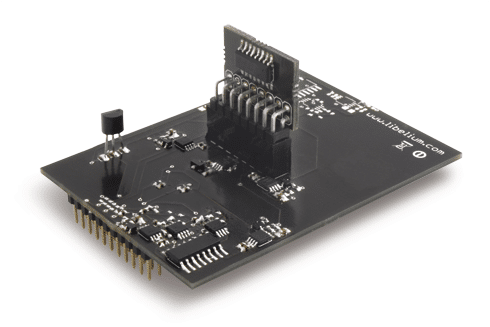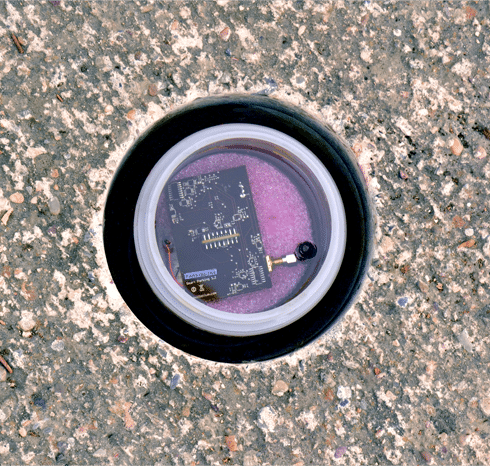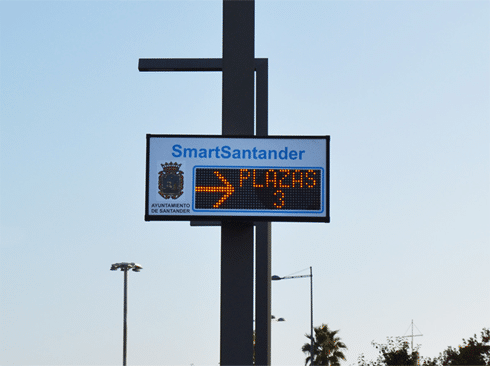SMART SANTANDER project, which has been developed by several companies and institutions including Telefonica I+D and the University of Cantabria, aims at designing, deploying and validating in Santander and its environment a platform composed of sensors, actuators, cameras and screens to offer useful information to citizens. 375 Waspmotes have been deployed to monitor parking free slots.
The city of Santander was divided into 22 different zones. Each zone had a Meshlium to gather the data from the sensors and the number of sensors depended on the area to cover. Each zone had different network parameters, creating independent networks that work on different frequency channels not to interfere with each other.

Castellón, Comunidad Valenciana, Spain
375 Waspmotes were deployed in different locations within the city of Santander, measuring magnetic field to detect whether a parking slot is free. Magnetic field sensor is connected to Waspmote through the Smart Parking Sensor Board.

Fig. 1.- Smart Parking Sensor Board
These sensors detect the variation of the magnetic field generated by a car parked on it. To do that, the sensor is buried under the surface of the road inside a waterproof casing. The hole is closed using a specific material and it is barely detectable at a glance.

Fig. 2.- Real installation in the city of Santander
The information is sent periodically to the repeaters and then to the Meshlium, which stores the data and updates the information available for citizens. There are a series of panels located within the city of Santander to indicate the number of free parking slots. This information is updated every 5 minutes to allow the citizens to find a free parking spot in the shortest time.

Fig. 3.- Visual panels to inform about the number of free parking slots
As a result of this project, environmental parameters can be monitored for further study as well as citizens can also know free parking slots within Santander’s city centre. Furthermore, SmartSantander project is a large-scale network for experimentation that allows researchers from all over the world to test different algorithms in a real environment.

Fig. 4.- Interactive map that shows the availability of free parking slots
Watch how Libelium is powering the IoT Revolution
References:
- Article from Libelium.com

